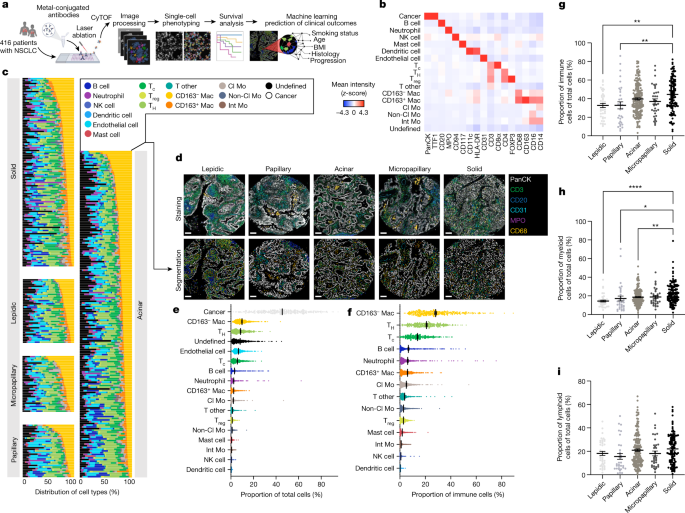
Feb 01, 2023
1 min, 1 sec
The positioning of immune cells within tumours is known to dictate their function 12, 13, 14; therefore, understanding the spatial landscape of the lung TIME would provide mechanistic insights into disease progression, reveal novel therapeutic vulnerabilities and unveil biomarkers of response to existing treatments.We extracted all microenvironmental populations represented in our dataset (including endothelial, myeloid or lymphoid compartments) and performed t-distributed stochastic neighbour embedding ( t-SNE) based on functional markers in our antibody panel (Extended Data Fig.Our data represent a valuable resource that adds to a quickly evolving body of literature supporting the importance of spatially resolved single-cell datasets in understanding how the TIME architecture relates to tumour biology.Our findings represent an important advance over existing prediction tools that use clinical and pathological variables and may enable more effective utilization of a growing armamentarium of peri-adjuvant systemic therapies to improve cancer outcomes 40, 41.Mark Sorin, Elham Karimi, Benoit Fiset, Lysanne Desharnais, Lucas J. M. Perus, Simon Milette, Miranda W. Yu, Sarah M. Maritan, Samuel Doré, Yuhong Wei, Roni Rayes, Peter M. Siegel, Jonathan D. Spicer, Daniela F. Quail & Logan A. Walshb, Schematic of IMC segmentation pipeline representing antibody conjugation of metal isotopes, labeling, laser ablation, CyTOF acquisition, image tiling, structure tensor response, scale selection and final output.
